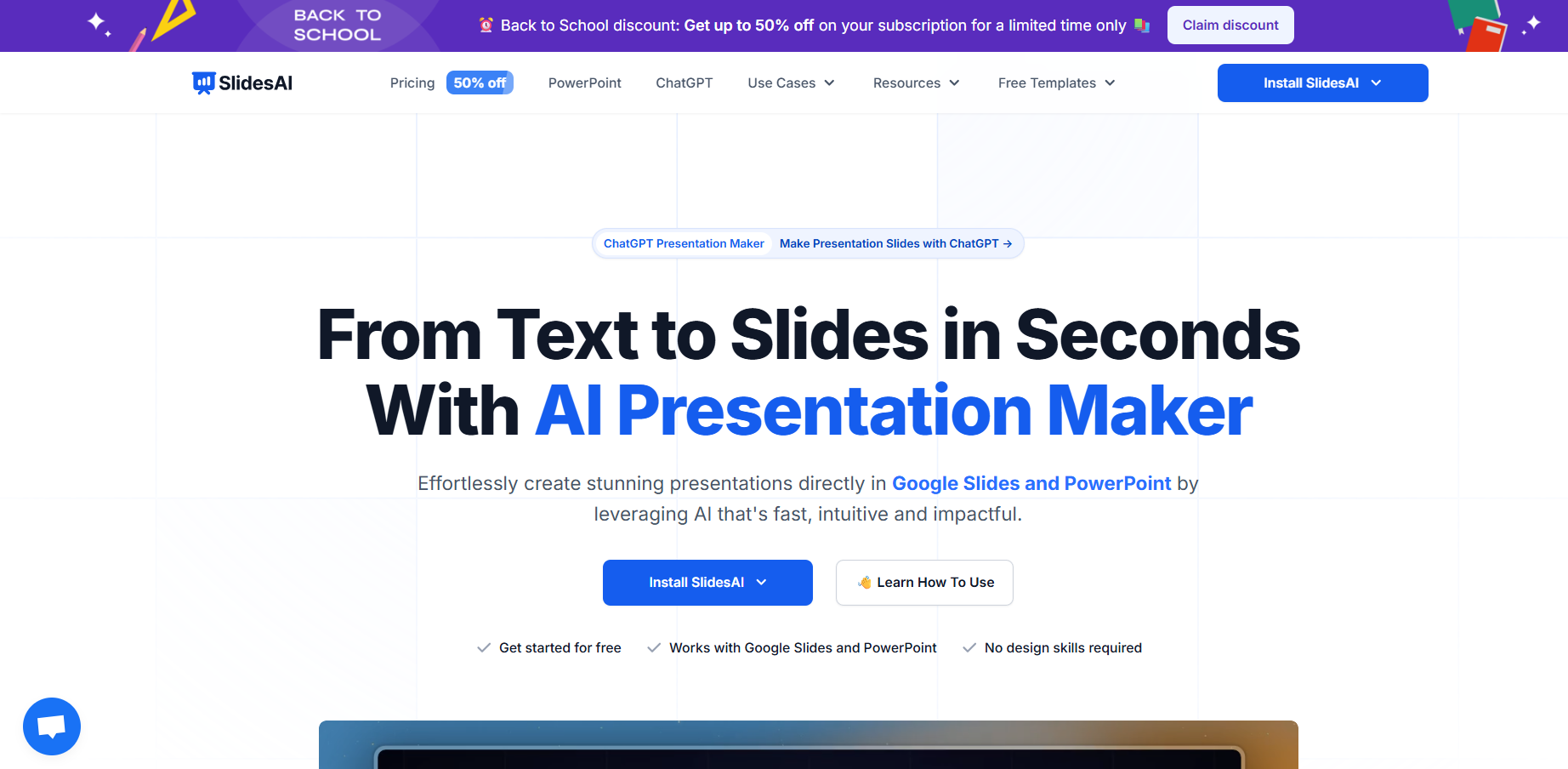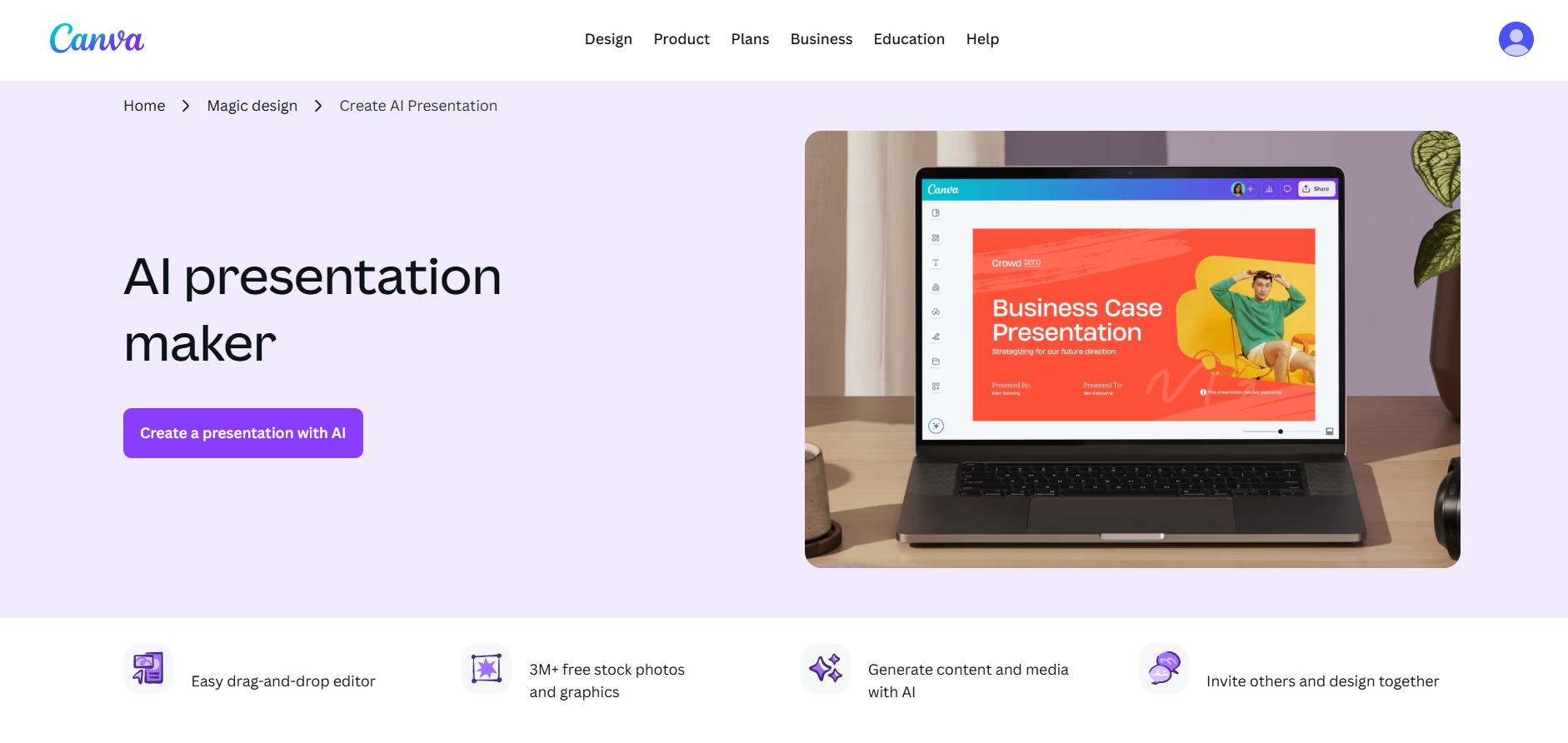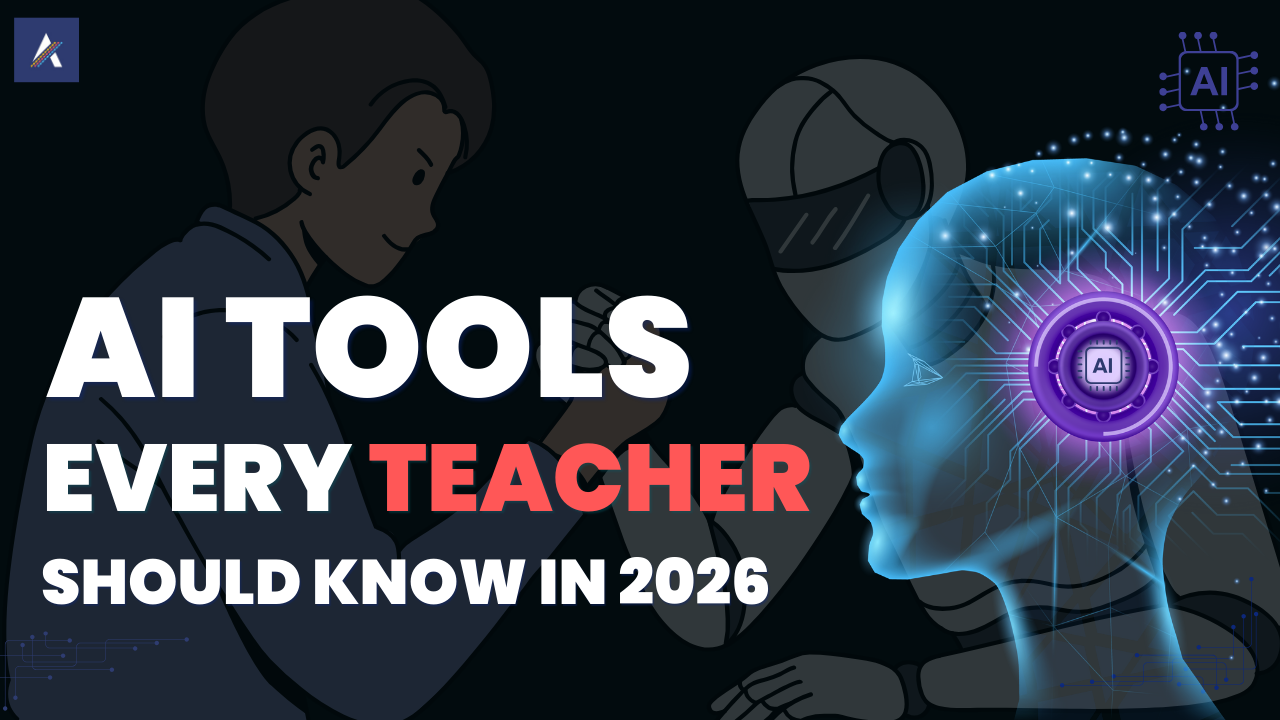AI is revolutionising education by assisting educators in increasing student engagement, saving time, and personalising instruction. Teachers now have a variety of smart tools at their fingertips for everything from lesson planning to making presentations and guaranteeing content accessibility.
This is a thorough, category-based guide to the AI tools that every teacher should be familiar with by 2026.
12 AI Tools That Help Teachers Work More Efficiently
AI Teaching Assistants
AI teaching assistants are made to assist teachers with lesson planning, workload management, and individualised student support. Teachers can concentrate on instruction and student engagement by using these tools, which can evaluate student performance, suggest resources, and even automate repetitive tasks.
The following top AI teaching assistants have the potential to completely transform the way educators work:
1. Extramarks

Extramarks is a leading India-based EdTech platform designed to enhance both classroom teaching and student learning across K-12 and exam preparation. Its AI-driven system supports teachers in planning lessons, managing classrooms, and simplifying everyday teaching workflows. By providing real-time insights and a more engaging learning environment, it strengthens teaching efficiency and student understanding. Overall, it acts as a reliable companion that brings structure and saves time in the classroom.
Key Features:
- Creates unique teaching decks and classroom activities
- Creates lesson plans from textbook indexes
- Converts lessons into any preferred language
- AI-powered question conversion and grading
- Tracks student engagement during live classes
- Automates attendance and teacher sign-in via facial recognition
2. Google Classroom AI

Google Classroom AI brings helpful automation into the regular Classroom experience, making it easier for teachers to handle assignments and communication. It supports teachers by drafting basic content, organising tasks, and giving insights into student progress.
The system helps reduce repetitive work so educators can spend more time on actual teaching. Everything stays neatly connected through Google’s ecosystem.
Key Features:
- AI-driven grading assistance and feedback
- Effective task management
- Google Workspace integration
- Student progress insights
- Suggestions for classroom engagement
3. Khanmigo (Khan Academy AI)

Khanmigo acts like a helpful guide for both teachers and students. It supports students by walking them through explanations and helping them understand concepts step-by-step. Teachers can use it to quickly plan lessons, generate ideas, or prepare instructional materials. It’s built with classroom needs in mind, making it a safe and supportive teaching aid.
Key Features:
- AI-powered student tutoring
- Creating content for teachers
- AI framework that is safe and suitable for classrooms
- Automated creation of questions and activities
- Analysis of students’ skill levels
AI Note-Taking & Productivity Tools
AI note-taking tools help teachers capture ideas, summarise meetings, organise lesson concepts, and save time during planning. Instead of writing everything manually, teachers can rely on AI to turn voice notes, recordings, or raw text into clean summaries and organised documents.
These tools are especially helpful during staff meetings, parent interactions, workshops, or when preparing lesson material. They keep everything structured and easy to refer back to, making a teacher’s workflow much smoother.
Here are some reliable tools worth including:
4. Audionotes

Audionotes converts voice recordings into clean, structured notes and summaries. Teachers can record meetings, parent discussions, or lesson ideas, and the tool turns them into clear written content. It also supports transcripts, task lists, and quick highlights. This makes it helpful for capturing information on the go.
Key Features:
- Voice-to-text note conversion
- Automatic meeting summaries
- Topic extraction and action items
- Supports audio, video, and text inputs
- Exports notes in multiple formats
5. Otter.ai

Otter.ai captures conversations, lectures, and meetings in real time and turns them into searchable transcripts. Teachers can highlight important sections, generate summaries, and revisit key moments. It’s helpful during trainings, workshops, or long discussions.
Key Features:
- Real-time transcription
- Speaker identification
- Summary keywords and highlights
- Searchable transcripts
- Sync with Zoom, Meet, and Teams
6. Notion AI

Notion AI helps teachers organise their planning, notes, and documents in one workspace. It can rewrite text, summarise content, generate ideas, and help structure lesson resources. Teachers can also use it to maintain class journals or planning pages.
Key Features:
- AI-generated summaries
- Automatic organisation of notes
- Writing assistance and idea generation
- Custom templates for teachers
- Multi-device synced workspace
AI Presentation Creators
SlidesAI is an AI presentation maker that converts text into polished, ready-to-present slides in real time. Organising content, suggesting layouts, and producing visually appealing designs in a matter of seconds saves teachers time.
The following AI-powered tools will simplify your presentation process:
7. SlidesAI

SlidesAI is an AI presentation creator that instantly transforms text into professional, ready-to-present slides. Teachers can simply paste their text, and the tool handles the layout and structure automatically. It’s especially useful when preparing lessons on tight schedules or converting notes into visual material. The focus is on making clear, simple slides without requiring design skills.
Key Features:
- Text-to-slide automation
- Multiple design themes
- Customizable templates
- Editable layouts
- Quick export to Google Slides & PowerPoint
- AI-generated visual suggestions
8. Canva Magic Presentation

Canva Magic Presentation helps teachers create visually appealing slides with minimal effort. By typing a simple prompt, the tool drafts a full presentation that can be easily edited. It’s a great choice for teachers who want flexibility and creativity without spending too much time on design. The editor keeps everything simple and approachable.
Key Features:
- Creating presentations based on prompts
- Diagrams and templates for learning that come with the program
- Design ideas with the help of AI
- Editing by dragging and dropping
9. Microsoft Designer (Education Mode)

Microsoft Designer makes it easier for teachers to prepare visuals, posters, and slide content for their lessons. Its education-focused setup provides ready-made layouts suited for classroom needs. The tool automatically makes designs look neat and balanced, even if the teacher has little design experience. It helps create clean and organised teaching materials quickly.
Key Features:
- AI-enhanced slide & visual design
- Education-focused templates
- Accessibility-friendly layouts
- Smart text formatting
- Export to PowerPoint without any problems
AI Content Accessibility Tools
AI Content Accessibility Tools help students with different learning needs by making learning materials more accessible. They can change text, pictures, and videos into formats that are easy to read, add descriptive tags, and make sure that accessibility standards are met.
Here are some important AI tools for making content that is accessible to everyone:
10. Microsoft Immersive Reader

Immersive Reader is designed to make reading easier for students who struggle with comprehension or attention. It adjusts how text appears and provides support that helps students read at their own pace. Teachers can use it to offer a more comfortable reading experience for diverse learners. It works across multiple apps, making it convenient for everyday classroom use.
Key Features:
- Read-aloud and text highlighting
- Line focus and spacing modifications
- Picture dictionary
- Real-time translation
- Dyslexia-friendly fonts
AI Assessment & Feedback Tools
AI Assessment & Feedback Tools create customised tests, offer actionable feedback, and save teachers time when grading assignments. These tools allow for more efficient formative assessments, the tracking of performance trends, and the identification of student misconceptions.
The best AI tools for evaluation and feedback are as follows:
11. Gradescope

Gradescope helps teachers grade assignments more efficiently by simplifying the reviewing process. It reduces the time spent checking papers and keeps scoring consistent across the class. The platform is helpful for both handwritten and digital submissions. Teachers get a clearer picture of how students are performing without the usual workload.
Key Features:
- AI-assisted grading
- Rubric management
- Supports handwritten responses
- Detailed feedback insights
- LMS integration
12. Formative AI

Formative AI supports teachers by giving real-time insights into how students are understanding the lesson. It allows for interactive assessments where teachers can instantly see which students need help. This makes it easier to adjust lessons and provide support right away. It keeps classrooms more responsive and connected during learning activities.
Key Features:
- AI-enhanced formative assessments
- Students’ responses in real time
- Automatic analysis and suggestions
- Custom question creation
- Classroom dashboard
Conclusion
As classrooms continue to evolve, AI is becoming a valuable companion that helps teachers work smarter, not harder. Whether it’s simplifying lesson planning, supporting students who learn differently, or taking care of repetitive tasks, these technologies make day-to-day teaching smoother and more efficient. By using the right AI tools, educators can spend more time doing what truly matters—connecting with students and creating meaningful learning experiences.

Sandeep Kumar is the Founder & CEO of Aitude, a leading AI tools, research, and tutorial platform dedicated to empowering learners, researchers, and innovators. Under his leadership, Aitude has become a go-to resource for those seeking the latest in artificial intelligence, machine learning, computer vision, and development strategies.


